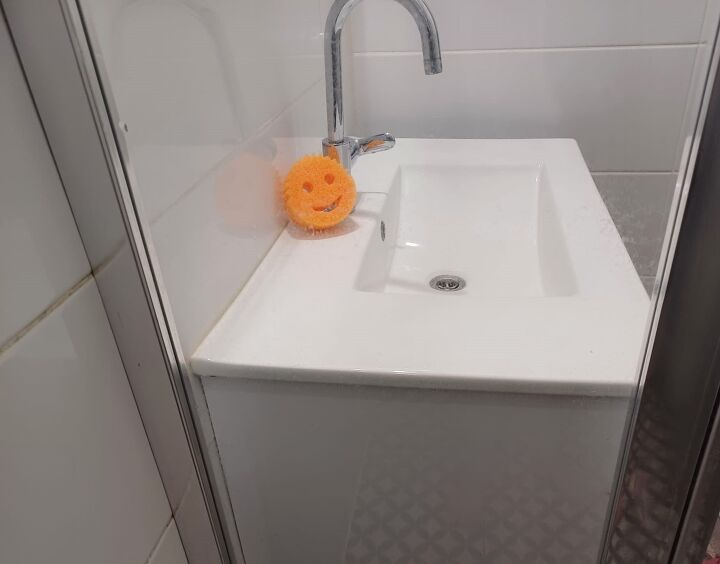Low water pressure only on the hot water side..gas water heater..no visible leaks..unit is 5 years old.

-
Low pressure or low flow? pressure is pretty consistent in most residential applications...flow however can be effected by scale, mineral build ups etc. These usually occur in "constricted" sites like shower heads and faucet aerators. In many cases descaling with a soak in vinegar with improve the flow.
 KMS Woodworks
on Dec 04, 2011
Helpful Reply
KMS Woodworks
on Dec 04, 2011
Helpful Reply -
-
When you say low water pressure on hot water side. It this at all faucets and tub spouts, or just one faucet in particular? If its only one faucet, then clean the screen on the discharge spout on the faucet. If its all the faucets then check the shut off valve on hot water heater first as it may not be opening all the way. You can also flush it out, but its doubtful that this would cause any real low water issue. Unless some rust floated into the dip tub where the water exits out of the heater and plugged it. Then flushing may help.
 Woodbridge Environmental Tiptophouse.com
on Dec 05, 2011
Helpful Reply
Woodbridge Environmental Tiptophouse.com
on Dec 05, 2011
Helpful Reply -
-
The problem was a malfunctioned "check valve" Thanks
 Transform-A-Door, Inc.
on Dec 12, 2011
Helpful Reply
Transform-A-Door, Inc.
on Dec 12, 2011
Helpful Reply -
-
A check valve installed between the tank and point of use?....that would be a new one form me.
 KMS Woodworks
on Dec 13, 2011
Helpful Reply
KMS Woodworks
on Dec 13, 2011
Helpful Reply -
-
What is installed on the top of lots of water heaters, and the first I ever heard failing is a little ball check valve that opens when the water is running through the heater. A spring holds it closed when water is not on. Its reason for being there is to stop convection currents from traveling out of the water heater causing it to turn on and off more during periods of none use. You often see them as blue and pink disks that are fastened right at the heater inlet and outlet where the female coupling is typically installed.
 Woodbridge Environmental Tiptophouse.com
on Dec 13, 2011
Helpful Reply
Woodbridge Environmental Tiptophouse.com
on Dec 13, 2011
Helpful Reply -
-
cool...learned some new stuff today
 KMS Woodworks
on Dec 14, 2011
Helpful Reply
KMS Woodworks
on Dec 14, 2011
Helpful Reply -
-
Possible mineral deposits / electrolytic action as dissimilar metals come in contact without the use of a dielectric fitting such as a union or insulated nipple
 Tieger plumbing
on Dec 14, 2011
Helpful Reply
Tieger plumbing
on Dec 14, 2011
Helpful Reply -
Related Discussions
How do I clean salt marks on my salt water pool?
My salt water pool leaves white marks all around the pool I have tried everything to remove them with no luck. Can someone please help me????
If you could redo your master bathroom, what would you change?
Dreaming of a master bathroom remodel?Tell us: If you could change just one thing, what would it be?Your input could inspire others looking for master bathroom ideas ... See more
Hardwood Floors or Carpet in Bedroom: What's Your Preference?
Hey Hometalkers! We've got a cozy debate going on here: when it comes to bedroom flooring, do you lean towards the warmth of carpet or the timeless elegance of hardwo... See more
What can I do about wood smoke coming into my house?
I need help. My back door neighbor heats with a wood stove all winter. They are downhill from me. Almost all their smoke makes its way into my house, causing headache... See more
How to find out the value of antique furniture
My husband and I are looking to sell his grandmother's dining room set but, we have no idea what to ask for it. We could not find any markings as to who made it, all ... See more
How do I fix a broken metal hanging rod in my closet
I have a broken shelf hanging rod in my closet I tried gluing And taping it and nothing worked I need help and also the shelf is slightly bent




